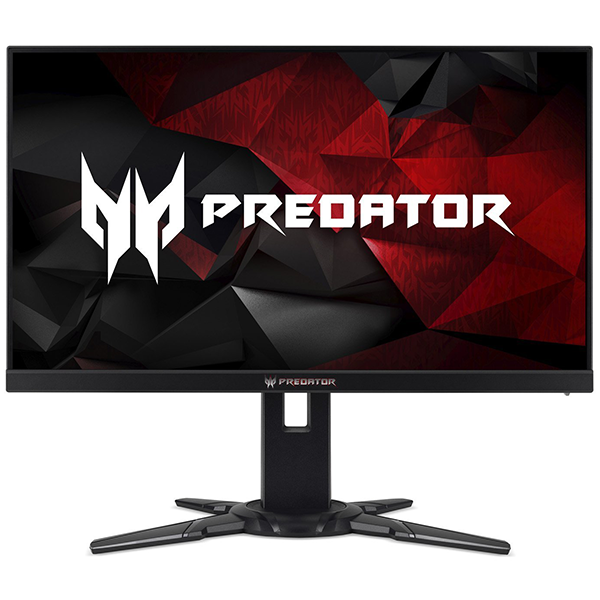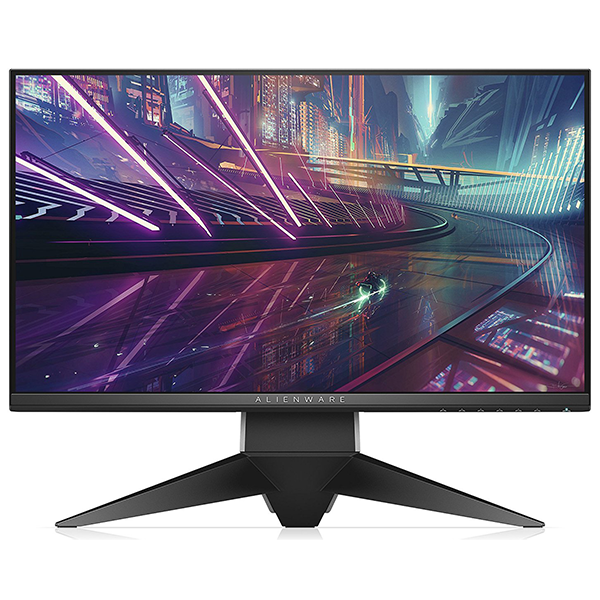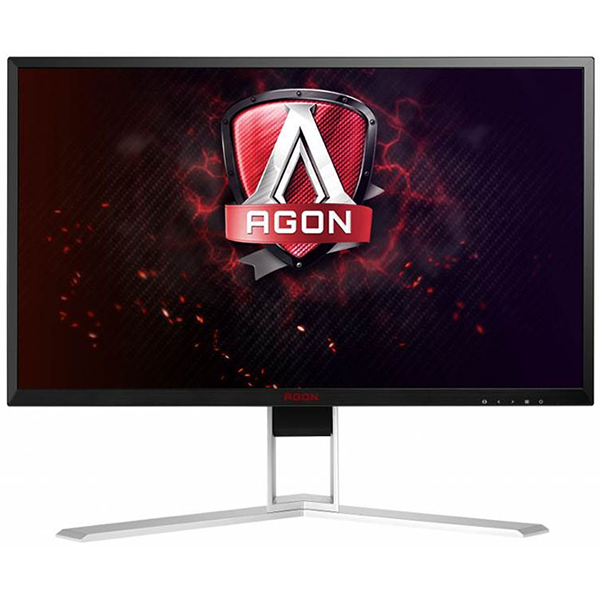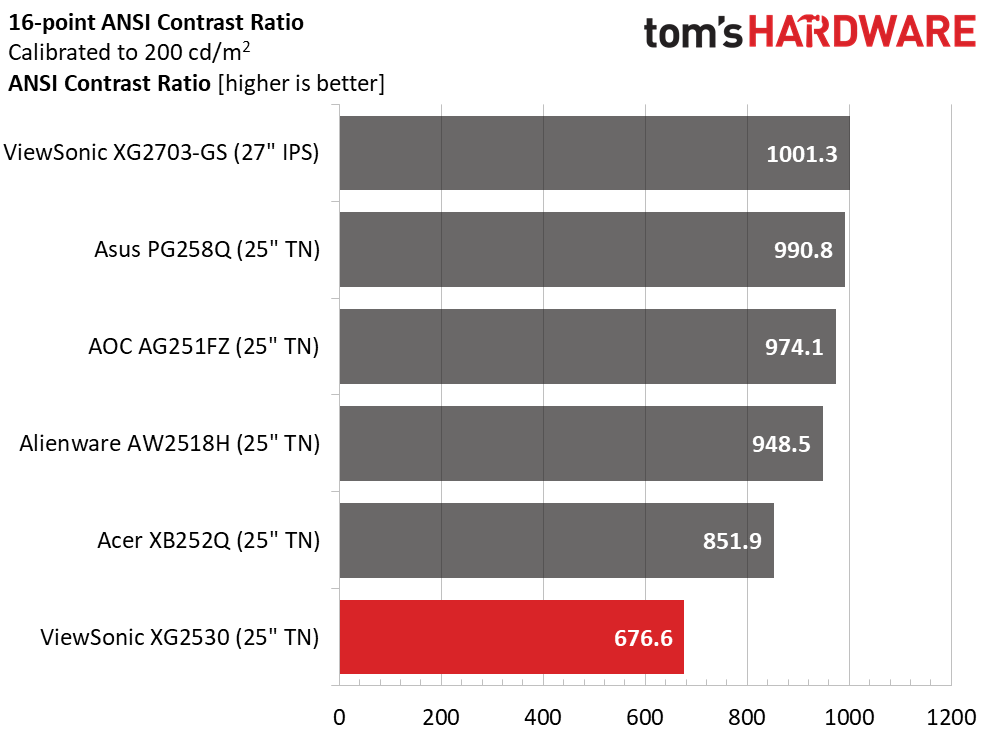ViewSonic XG2530 240Hz FreeSync Monitor Review
Why you can trust Tom's Hardware
Brightness & Contrast
To read about our monitor tests in depth, please check out Display Testing Explained: How We Test Monitors and TVs. Brightness and Contrast testing are covered on page two.
Uncalibrated – Maximum Backlight Level
The XG2530 is the fifth 25” 240Hz monitor we’ve tested so far. The previous four are Asus’ PG258Q, Acer’s XB252Q, Alienware’s AW2518H, and AOC’s AG251FZ. The first three are G-Sync screens while the fourth is FreeSync. To round out the group, we’ve included a 27” IPS display, ViewSonic’s XG2703-GS with G-Sync and a 165Hz refresh rate.
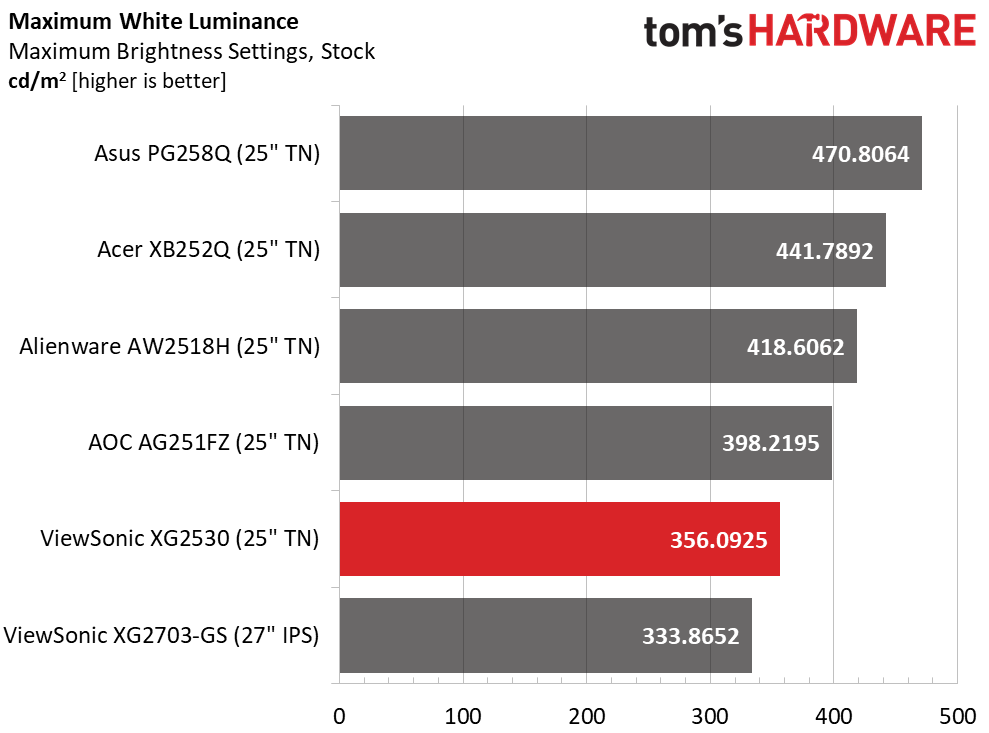
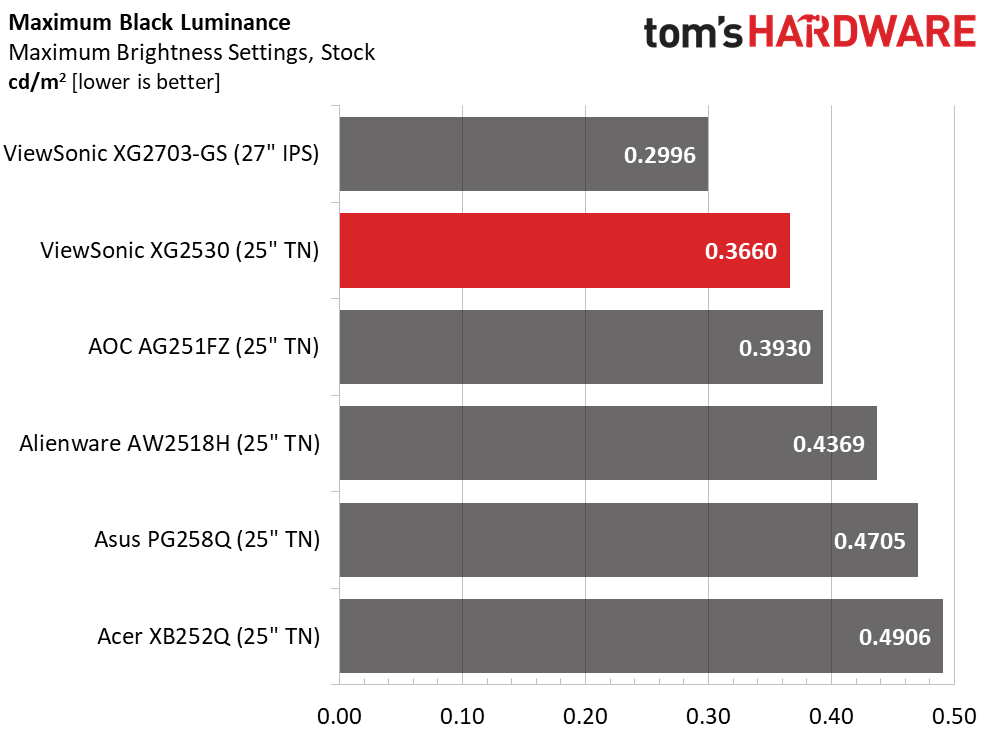
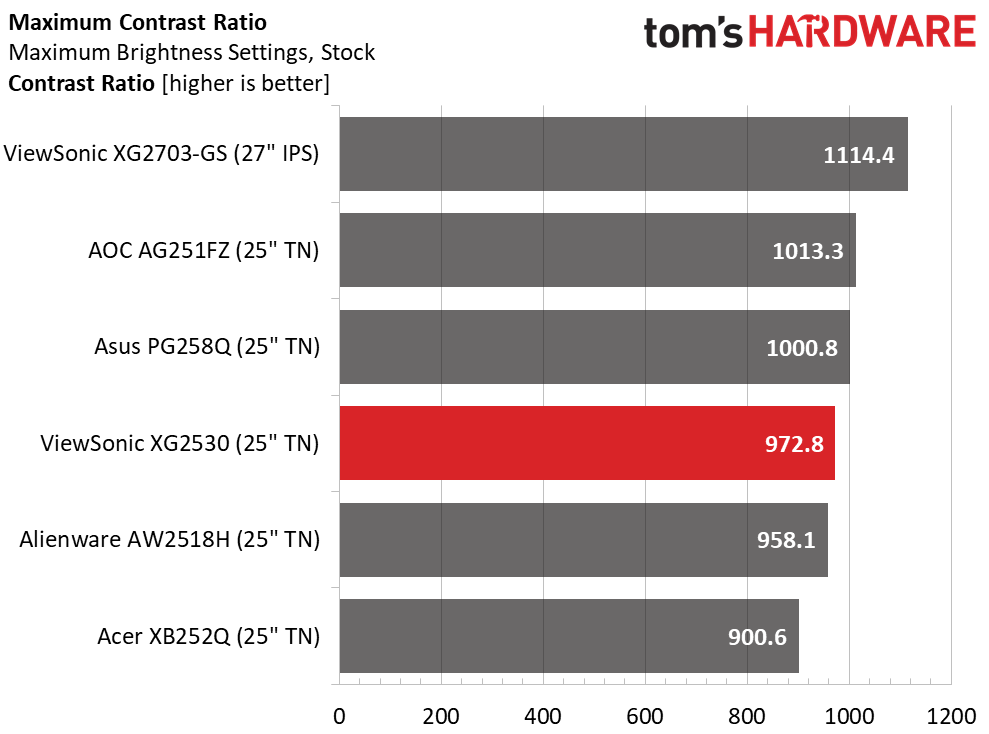
ViewSonic claims 400cd/m2 for the XG2530 but we only measured 356.0925cd/m2. This isn’t a big deal, because there is no backlight strobe to compensate for. G-Sync monitors always include ULMB which can reduce output by 60% or more. FreeSync screens don’t have this limitation. There’s more than enough light for any indoor environment.
Of the TN panels, the XG2530 offers the best black level, mainly due to its slightly dimmer backlight. You can see when contrast ratios are calculated that ViewSonic takes the top spot with its 27” IPS screen and runs mid-pack with its TN offering. It should be noted that the differences shown here are barely visible, and with a little room light they will be impossible to spot. Only a significant rise in contrast will make an appreciable change to image depth. With more VA panels and zone-dimming HDR screens just around the corner, that wish will soon become reality.
Uncalibrated – Minimum Backlight Level
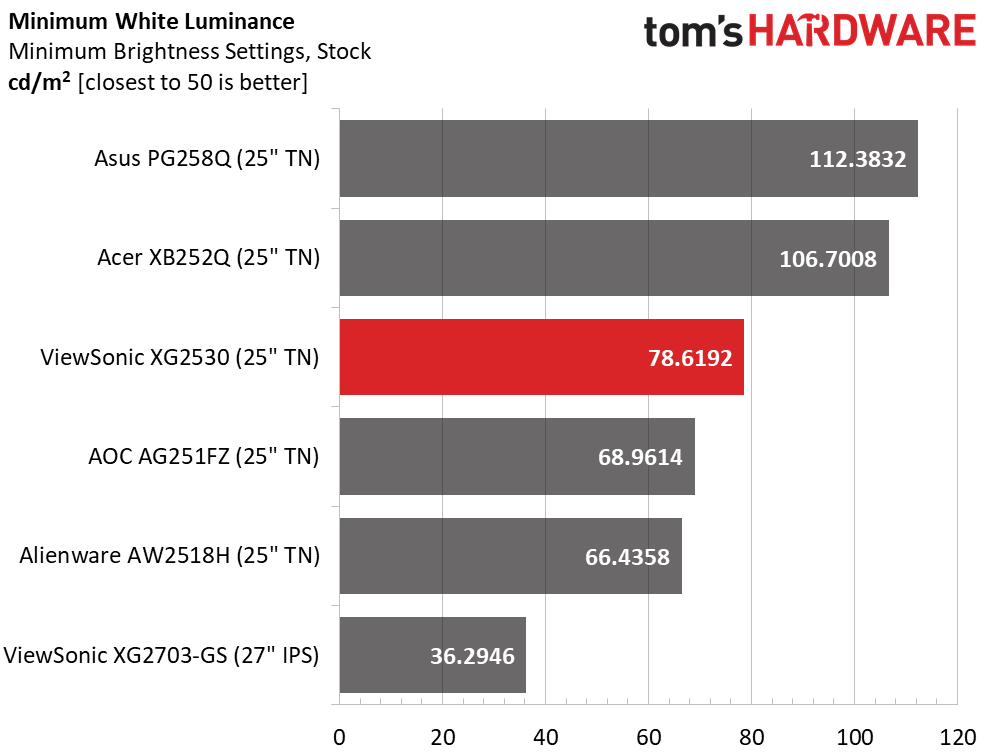
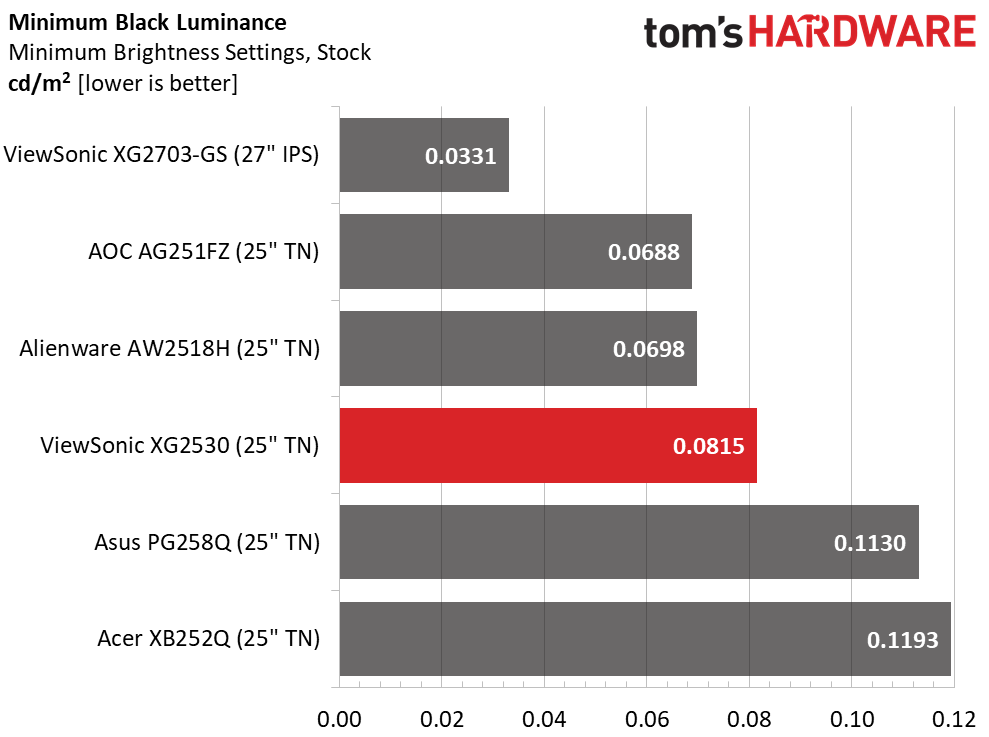
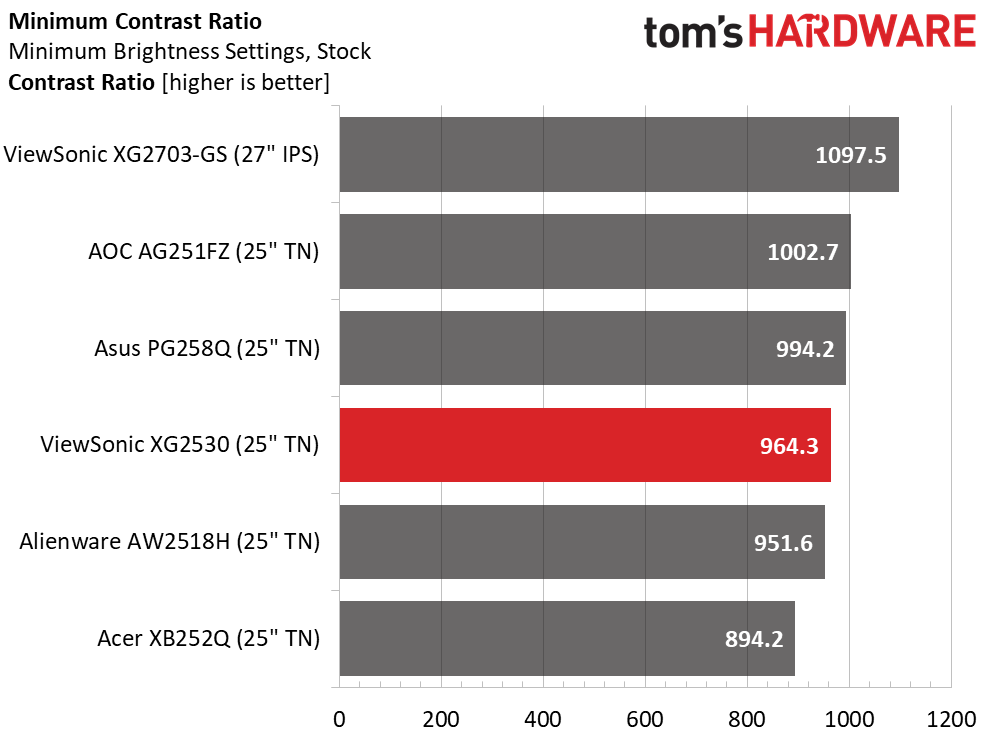
The XG2530 can only go down to 78nits or so, which is a tad brighter than we’d prefer in a totally dark room. Once calibrated, minimum output drops to 58nits which is less fatiguing during those all-night gaming sessions. Contrast remains very consistent at 964.3:1. Don’t be tempted by the DCR option in the OSD—it will only clip detail and make dark areas of the image more difficult to see.
After Calibration to 200cd/m2
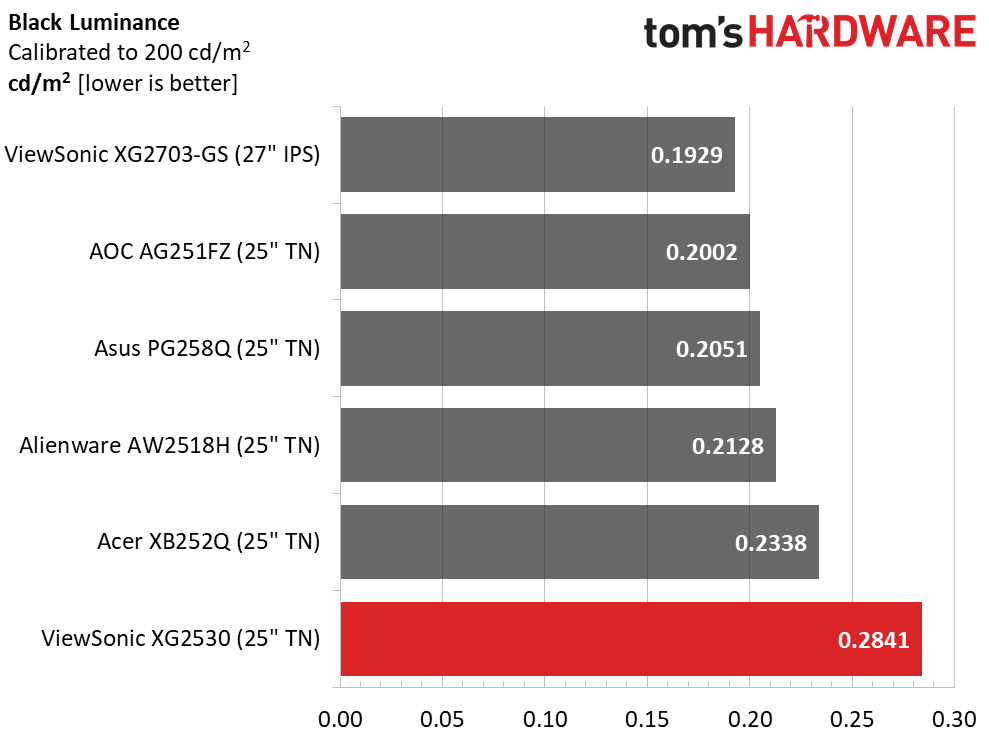
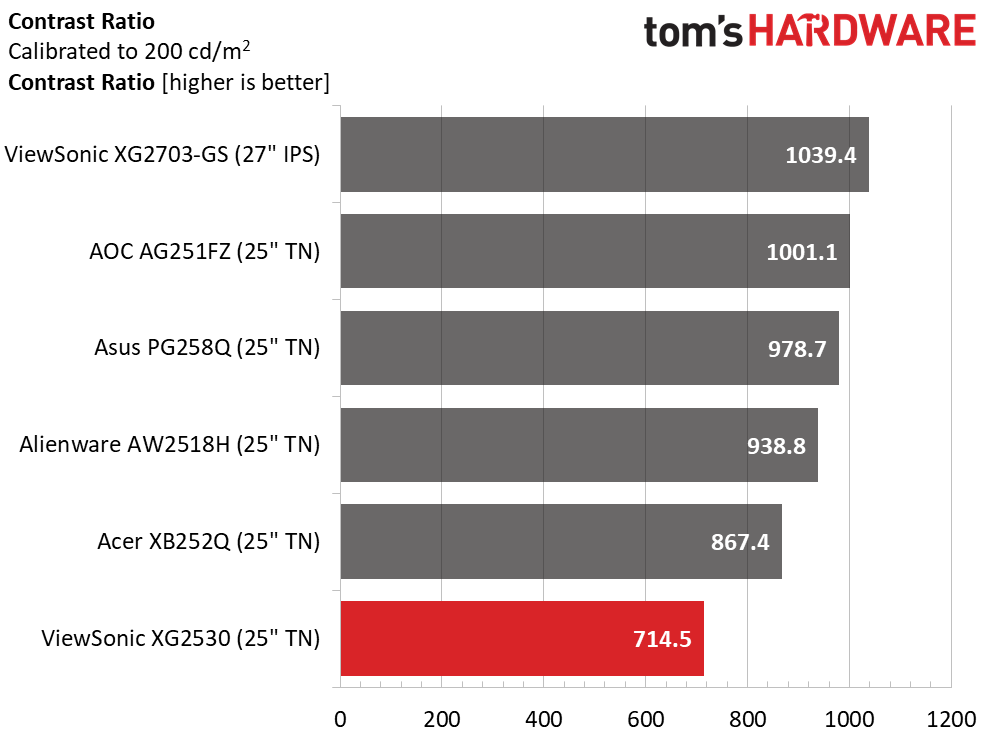
During our calibration, we worked with the Black Stabilization control to optimize shadow detail and firm up low-end gamma. It worked well but cost us a little contrast, which is now down to 714.5:1. This is the weakest area of the XG2530’s image and something we can just forgive thanks to its excellent color accuracy and screen uniformity. We know this panel is capable of more given the numbers posted by the other 25” displays. And IPS remains the image depth winner with an excellent 1039.4:1 result. Remember that this monitor is designed for ultimate gaming performance, not perfect image fidelity.
ANSI Contrast Ratio
ANSI contrast comes down a little from the sequential number due to a couple of tiny hotspots in our checkerboard pattern. Overall uniformity is quite good but again. TN is not the technology to deliver impressive contrast numbers. IPS makes a good showing here, but what we really need is 240Hz and adaptive refresh behind a VA panel.
Get Tom's Hardware's best news and in-depth reviews, straight to your inbox.
MORE: Best Gaming Monitors
MORE: Best Professional Monitors
MORE: How We Test Monitors
MORE: How To Choose A Monitor
MORE: All Monitor Content
Current page: Brightness & Contrast
Prev Page OSD Setup & Calibration Next Page Grayscale, Gamma & Color
Christian Eberle is a Contributing Editor for Tom's Hardware US. He's a veteran reviewer of A/V equipment, specializing in monitors. Christian began his obsession with tech when he built his first PC in 1991, a 286 running DOS 3.0 at a blazing 12MHz. In 2006, he undertook training from the Imaging Science Foundation in video calibration and testing and thus started a passion for precise imaging that persists to this day. He is also a professional musician with a degree from the New England Conservatory as a classical bassoonist which he used to good effect as a performer with the West Point Army Band from 1987 to 2013. He enjoys watching movies and listening to high-end audio in his custom-built home theater and can be seen riding trails near his home on a race-ready ICE VTX recumbent trike. Christian enjoys the endless summer in Florida where he lives with his wife and Chihuahua and plays with orchestras around the state.
-
cknobman I'm sorry but no matter how fast the response is I cannot go back to a 1080p resolution now.Reply
I'd rather have the extra resolution. -
RCPG What about the ASUS ROG STRIX XG258Q and the Dell Alienware AW2518Hf? They are also 240Hz monitors with Freesync. Those two (Viewsonic and AOC) are not the only ones and I would like it very much if you could also review those to see which would be the 240Hz Freesync monitor king. I'm thinking about buying one 240Hz Freesync monitor and would like to buy the best. Currently have an AMD R9 390. Planning to upgrade to a Vega 56 or something like that, but only when that becomes affordable. The prices are just too high right now.Reply -
d--anderson Let me know when we have 4K, 32", 120hz+ on a true HDR 10bit colour with 1000nits.Reply
Oh wait, nothing of the sort is available until 2H2018. All we've got is garbage that 'supports' HDR signal input without actually displaying it. -
ElMojoMikeo A 24.5in 1080p is not exciting. To some degree it is obsolete. With 2, 3 and 4K becoming wider spread. The 3 and 4K display would need to be around 32in for daily use. You might get away with 2K at 27in just. So higher resolutions will require larger displays. I think we are seeing this trend as we move forward. I am guessing that a 30ins 2K monitor with free sync could be the new base line.Reply -
ManamalGames Who the hell wants to buy a 1080p monitor at 240hz and 25". Please discontinue this monitor now. It is a waste of money.Reply -
therainbowchannelus Those in favor of higher resolutions... I agree that higher resolution with HDR and 1000 nits of brightness is great, but this monitor is geared towards a specific market of very competitive gamers. Those who play FPS games, etc. If you want to drive a monitor up to 240Hz @2K, you'd need a tech that might not even exist yet. 1080p resolution is there for a purpose. I am sure there will always be a market for this kind of hardware. Just read Amazon reviews on a 144Hz monitors.Reply
I have a 144 Hz monitor (on which colors and contrast look lile garbage) to play Rainbow 6 Siege on, and a separate 4K one so I can enjoy my Forza Horizon 3 in glorious 4K 60. 144Hz monitor gives you the ability to sharpen your skills if you desire to do so. Not everyone can afford that, but there is certainly a market for it. -
ddferrari Reply20613096 said:What about the ASUS ROG STRIX XG258Q and the Dell Alienware AW2518Hf?
Did you even read the review? They were both in the comparison charts.
-
ddferrari Reply
Is this the "cool" thing to do now- proclaim that anything less than the ultimate *whatever* (that doesn't even exist) is beneath your high standards? Here are a few facts to chew on, which apparently you haven't thought about:20613336 said:Let me know when we have 4K, 32", 120hz+ on a true HDR 10bit colour with 1000nits.
Oh wait, nothing of the sort is available until 2H2018. All we've got is garbage that 'supports' HDR signal input without actually displaying it.
a) There's barely any HDR content in any format available right now. You do realize that feeding any old thing into an HDR monitor does not give you an HDR picture, right? The content has to specifically offer HDR support.
b) There is no GPU in existence that can come close to 4K 120Hz. Not even the first gen of Volta will be able to. Certainly nothing from AMD for years to come.
This dream monitor of yours doesn't exist yet for a reason.
-
ddferrari Reply
So it's not for you, therefore it shouldn't exist? Really?20613694 said:Who the hell wants to buy a 1080p monitor at 240hz and 25". Please discontinue this monitor now. It is a waste of money.
-
d--anderson Reply20615148 said:
Is this the "cool" thing to do now- proclaim that anything less than the ultimate *whatever* (that doesn't even exist) is beneath your high standards? Here are a few facts to chew on, which apparently you haven't thought about:20613336 said:Let me know when we have 4K, 32", 120hz+ on a true HDR 10bit colour with 1000nits.
Oh wait, nothing of the sort is available until 2H2018. All we've got is garbage that 'supports' HDR signal input without actually displaying it.
a) There's barely any HDR content in any format available right now. You do realize that feeding any old thing into an HDR monitor does not give you an HDR picture, right? The content has to specifically offer HDR support.
b) There is no GPU in existence that can come close to 4K 120Hz. Not even the first gen of Volta will be able to. Certainly nothing from AMD for years to come.
This dream monitor of yours doesn't exist yet for a reason.
There's heaps of HDR media, even Dolby Vision content (12-bit colour). Many TV's are already capable of the above specs, but monitor tech lags behind tv's.
Not everything is about gaming, or I'd have mentioned input ms as well.
